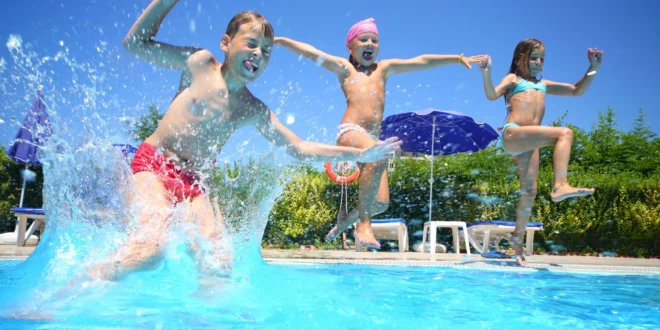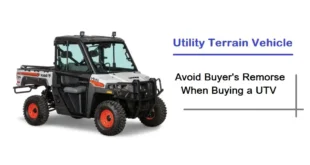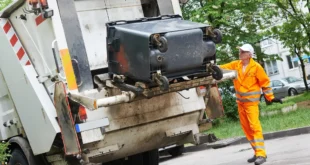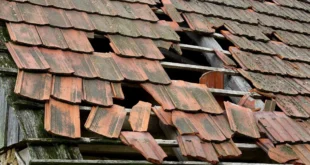Have you ever dreamed of having your own mini pool in your backyard? A place where you can cool off during the summer, have fun with friends, or just relax after a long day?
Installing a backyard pool can indeed make your dreams come true! However, it’s not just about digging a hole and filling it with water. There are certain things you need to know and consider before you start this exciting project.
This article will guide you through the 10 most important things to know before installing your very own backyard mini pool.
1. Local Regulations and Permits
The first thing you need to check is the local regulations and permits required for installing a new pool in your backyard. Every locality has its own set of rules regarding backyard construction, and you must adhere to them. This could include limits on the depth and size of the pool, safety measures, and proximity to your home or other structures.
You may also need to acquire a permit before you start construction. This is typically done at your local city or county office and may require a fee. It’s vital to get your permit approved before starting any work to avoid hefty fines or having to undo your hard work.
2. Budget
Setting a budget for your mini pool project is crucial. It should include not only the cost of construction but also the ongoing expenses like maintenance, cleaning, and possible repairs. Remember, it’s always better to overestimate the budget a little to cover any unexpected costs.
Your budget should also factor in the cost of additional features you might want, like a heating system or lights for night-time swimming. These can add significantly to the total cost, but they also enhance the pool’s usability and aesthetics. It’s important to think about what features are most important to you and plan accordingly.
3. Pool Size and Shape
Choosing the size and shape of your mini pool is another critical decision. It’s not just about what will look good but also what will work best in your available space. Consider the layout and size of your backyard, the position of your home, and any other structures or vegetation that may affect the pool placement.
When deciding on the shape, think about how you plan to use the pool. If you just want to cool off and relax, a simple round or square pool may be sufficient. However, if you plan to use it for exercise, like swimming laps, a rectangular pool might be more suitable.
4. Pool Type
The type of pool you choose largely depends on your personal preferences, budget, and the physical characteristics of your backyard. Each type has its own benefits and drawbacks. The most common types are in-ground pools, above-ground pools, and inflatable pools.
In-ground pools are the most permanent and typically the most expensive option. They can be customized to fit your backyard’s shape and size and can be made from various materials, including concrete, fiberglass, and vinyl. In-ground pools require professional installation and can significantly increase property value.
Above-ground pools, on the other hand, are less expensive and easier to install. They come in a range of sizes and shapes, and many can be installed by the homeowners themselves. However, they are less durable than in-ground pools and may not add as much value to your property.
Finally, inflatable pools are the cheapest and most temporary option. They are easy to set up and take down, making them perfect for those on a very tight budget or those who aren’t sure about committing to a permanent pool.
5. Material Selection
Choosing the right material for your mini pool is essential as it impacts the pool’s durability, maintenance, and cost. Concrete pools are long-lasting and can be customized in terms of shape and size. However, they require more maintenance and can be costly.
Fiberglass pools, on the other hand, are easy to install and require less maintenance. They are pre-molded, which limits your customization options but offers a smooth, non-porous surface that is resistant to algae growth. It’s a good balance between cost and durability.
Finally, vinyl pools are affordable and offer a high degree of customization. They have a softer surface, which can be safer for children. However, the vinyl liner may need to be replaced every 7-10 years, adding to the maintenance cost. Consider these factors and choose the best material that suits your needs and budget.
6. Location
Selecting the perfect location for your mini pool is crucial. Start by considering where in your backyard the pool would get the most sun, as this can affect the water temperature. However, you also need to think about privacy, and whether the chosen spot is visible to neighbors or the street.
Next, consider the proximity to your house. It’s usually more convenient to place the pool closer to your home for easy access, but ensure it’s a safe distance away to prevent any water damage to your home. Also, consider the closeness to utilities like electricity for any pool lights or heating system and water for filling the pool.
Lastly, keep in mind any trees or plants around the proposed pool location. While a shady spot can help on hot days, falling leaves can make pool maintenance more challenging. Additionally, roots from large trees could potentially interfere with the pool’s structure over time.
7. Pool Safety
Pool safety is a paramount consideration when installing a mini pool in your backyard. It’s essential to ensure that the pool area is secure to prevent any unsupervised access, especially by children. Installing a fence around the pool with a self-closing, self-latching gate is a common safety measure.
In addition to this, consider investing in a pool alarm or cover that can provide an extra layer of protection. The alarm can notify you if anyone enters the pool area, while a cover can prevent accidental falls into the water when the pool is not in use.
You may need to consider professional pool remodeling services to enhance safety features like a pool fence, pool cover, and proper drainage to prevent accidents. These services can help ensure your pool is not only safe but also visually appealing and functional for years.
8. Maintenance and Cleaning
Maintaining your mini pool clean and safe is crucial for its longevity and your health. Regular maintenance involves cleaning, checking the water chemistry, and ensuring the pool equipment is working properly. It’s essential to remove leaves, dirt, and other debris that could contaminate the water and clog the filters.
Water chemistry is another critical aspect of pool maintenance. Keeping the water balanced helps prevent bacteria and algae growth, and protects your pool equipment from damage. You’ll need to regularly monitor the pool’s pH level, alkalinity, and sanitizer levels, and make adjustments as necessary.
Finally, the pool’s equipment, like the pump and filter, needs regular checks to ensure they’re working correctly. If these components fail, your pool water can quickly become dirty and unsafe. Regular inspection can help identify potential issues before they become major problems, keeping your backyard pool enjoyable for years to come.
9. Landscaping and Aesthetics
Creating an appealing landscape around your mini pool can enhance its aesthetics and add value to your backyard. Consider incorporating elements such as decks, patios, or poolside lounge areas where you can relax and entertain. Plants can also add color, provide privacy, and create a natural atmosphere, but choose species that can withstand pool water splashes and don’t drop a lot of leaves.
Lighting is another essential aspect of pool landscaping. It not only makes your pool safe to use at night but can also highlight certain aspects of your backyard and pool area. From underwater lights to ambient lighting around the pool, the options are endless. Choose lights that complement your overall backyard design and create a warm, inviting ambiance.
Don’t forget about the practical aspects of pool landscaping. Ensure that the materials used around the pool are non-slip to prevent accidents. Consider a poolside storage area for towels, toys, and pool equipment. Lastly, create a barrier, such as a fence or hedge, for safety and privacy, but ensure that it aligns with your overall aesthetic design.
10. Water Conservation
Water conservation is a significant aspect to consider when installing and maintaining your backyard mini pool. This is especially true in areas prone to drought or where water usage is restricted. Installing a pool cover can help reduce water loss due to evaporation, thus saving on refilling costs and conserving water.
In addition to using a pool cover, consider the type of pool filtration system as some can be more water-efficient than others. For instance, cartridge filters don’t require backwashing like sand filters, thus saving water. Regular maintenance and checks for leaks also ensure water is not wasted unnecessarily.
Get Mini Pooled in Your Own Backyard Bliss
And there you have it – everything you need to know before installing a mini pool in your backyard. From checking local regulations and setting up a budget to considering pool safety and maintenance, each aspect is crucial to ensure a smooth installation and years of enjoyment.
Remember, it’s not just about having a place to cool off during the summer but creating a personal backyard oasis where you can relax, have fun, and make lasting memories. So, get ready to dive into your very own mini-pool adventure!
Did you learn something new from this article? If so, be sure to check out our blog for more educational content.
 SlushWeb Bringing Facts to Light
SlushWeb Bringing Facts to Light



